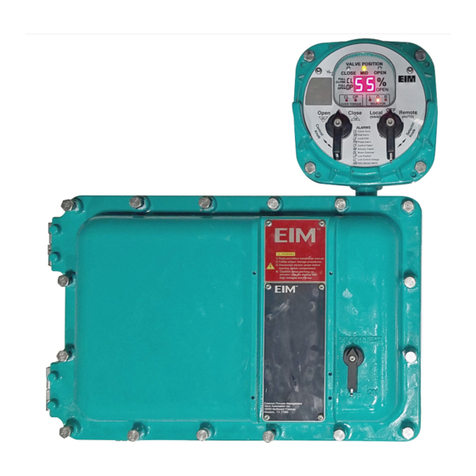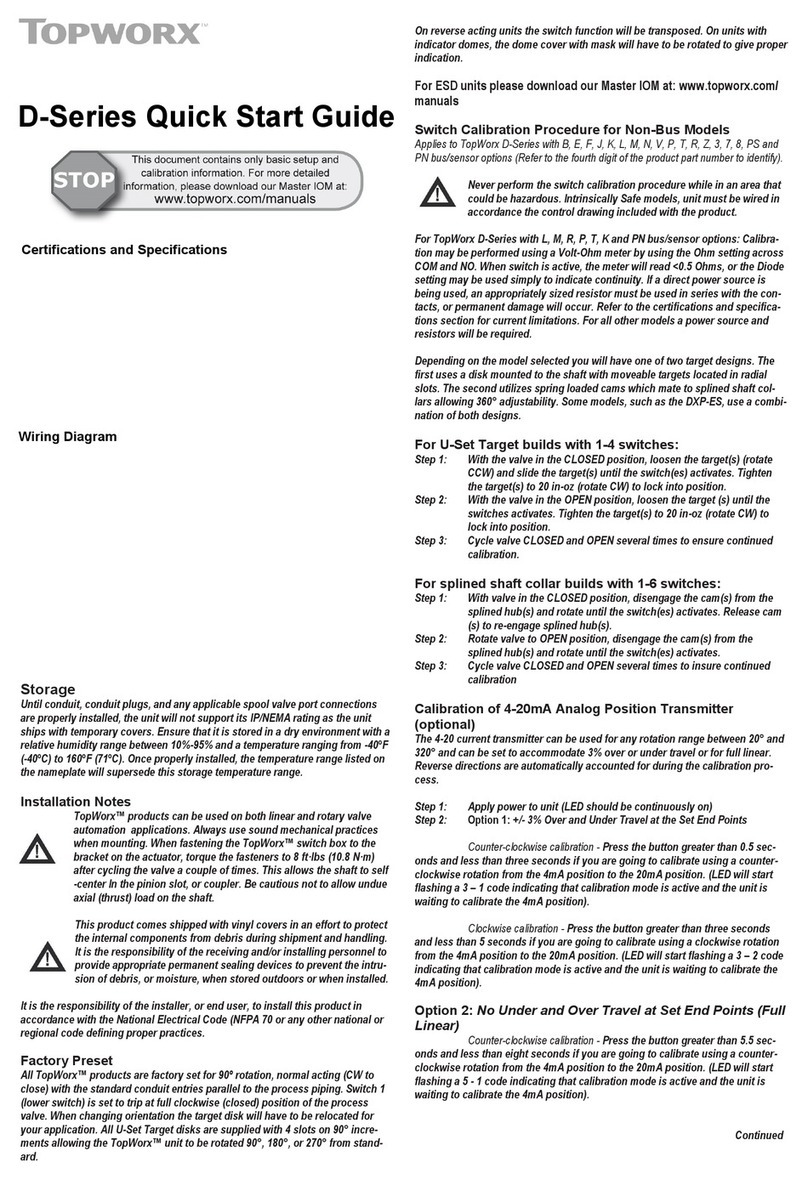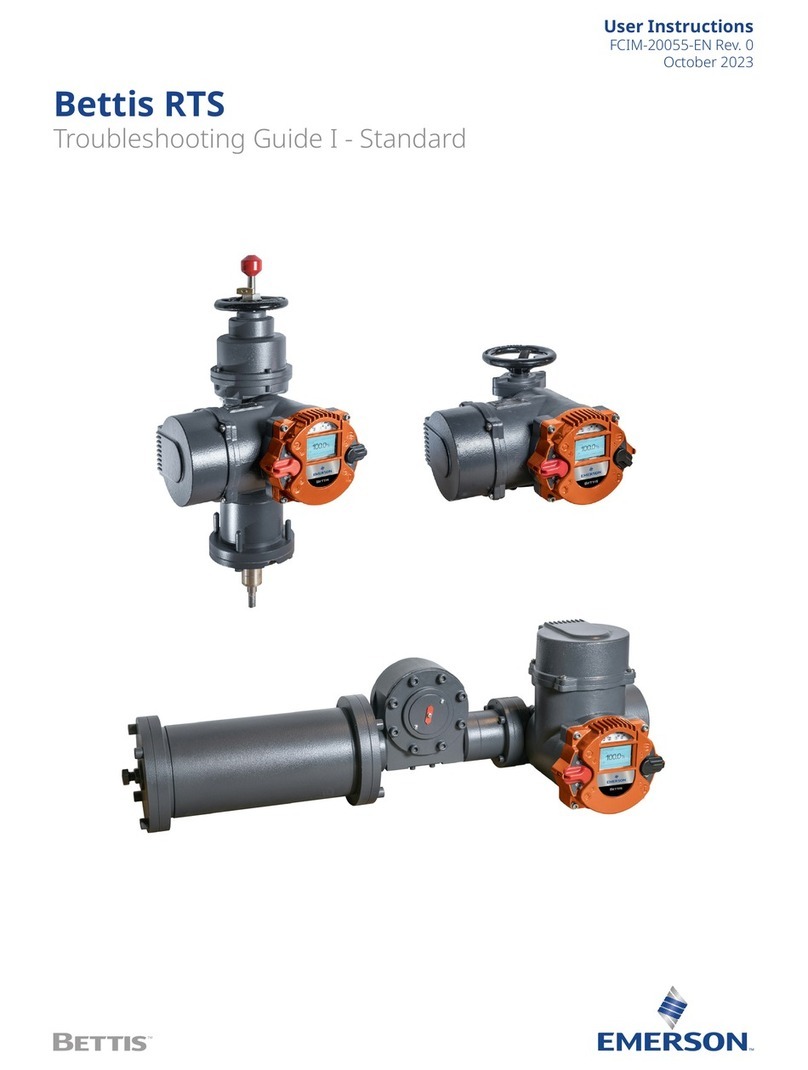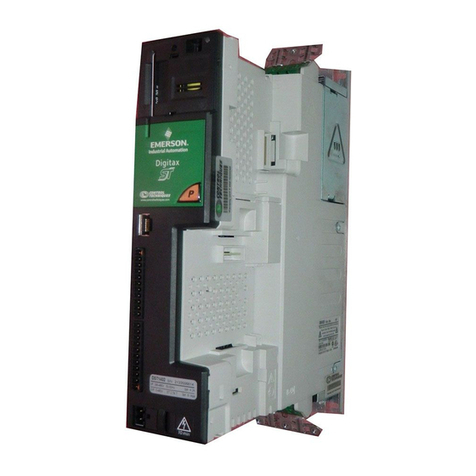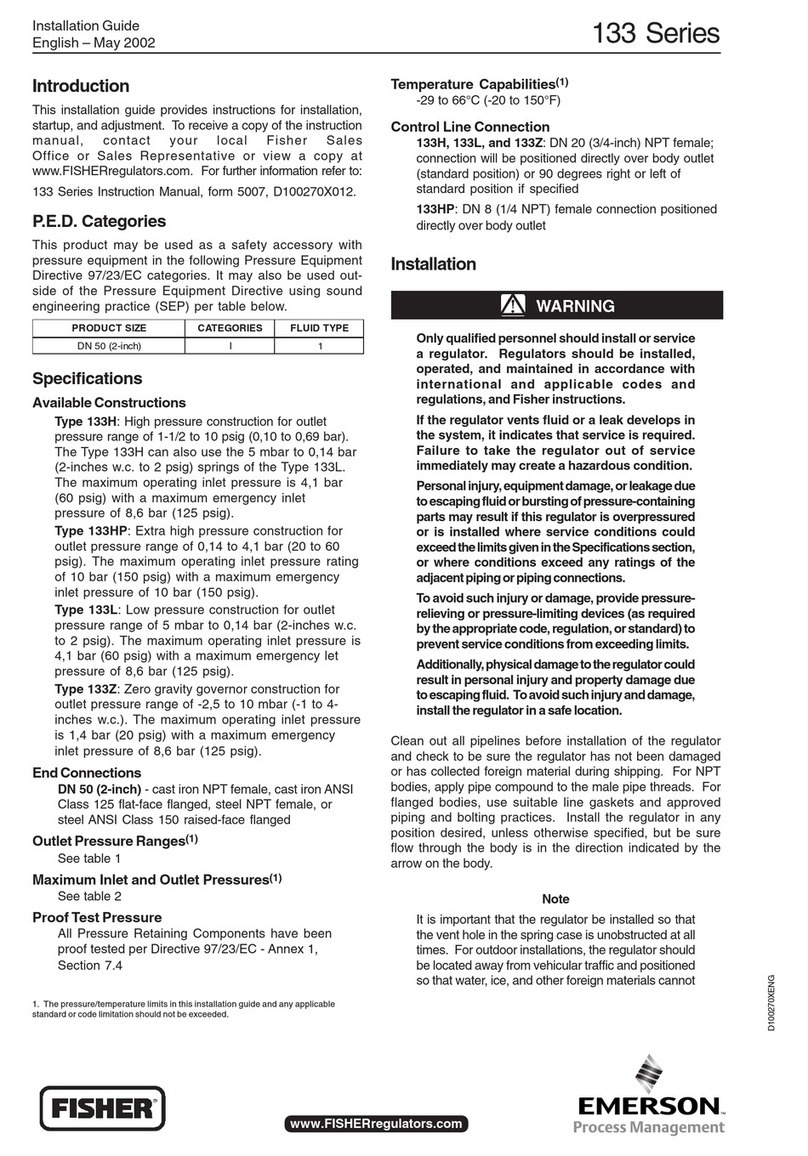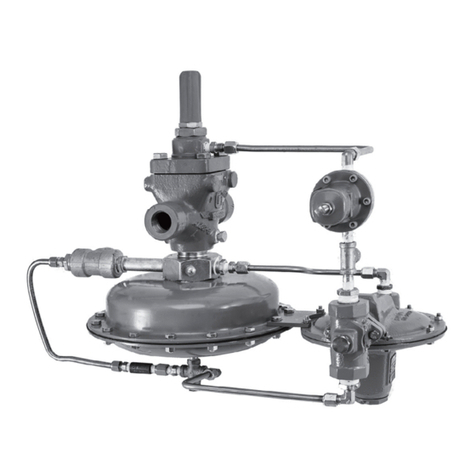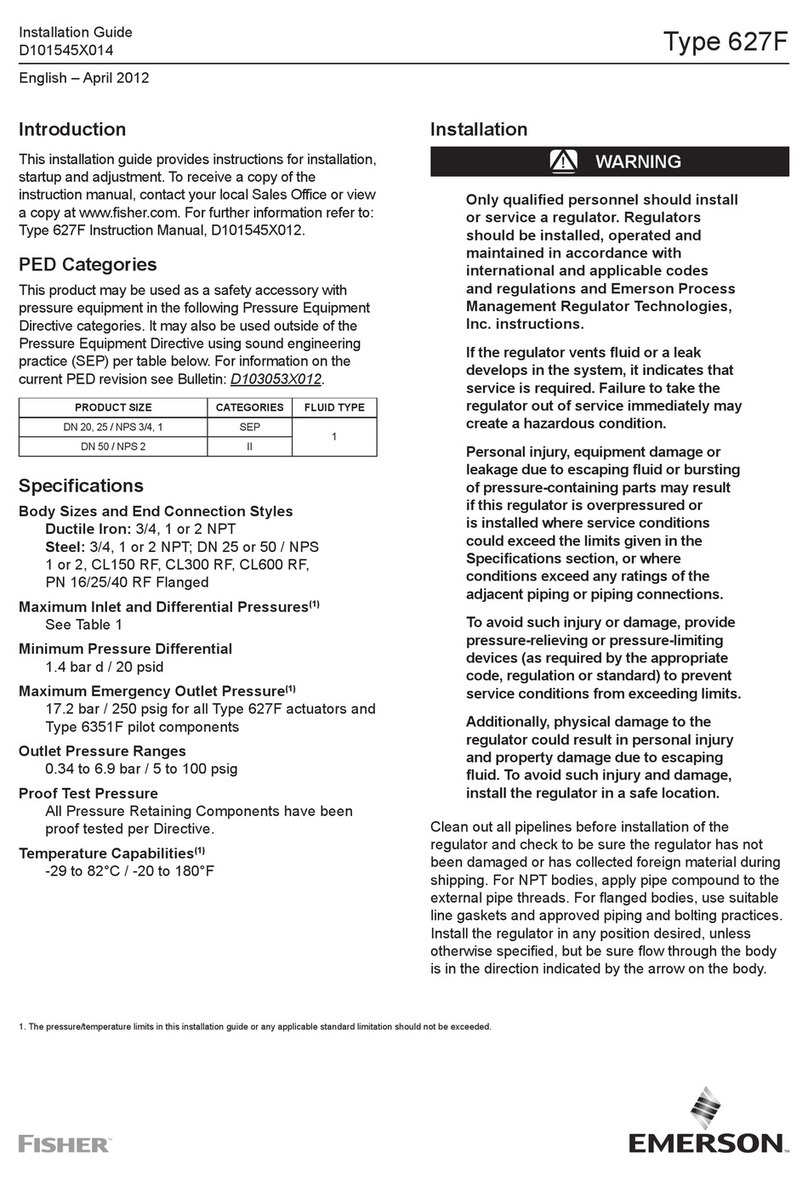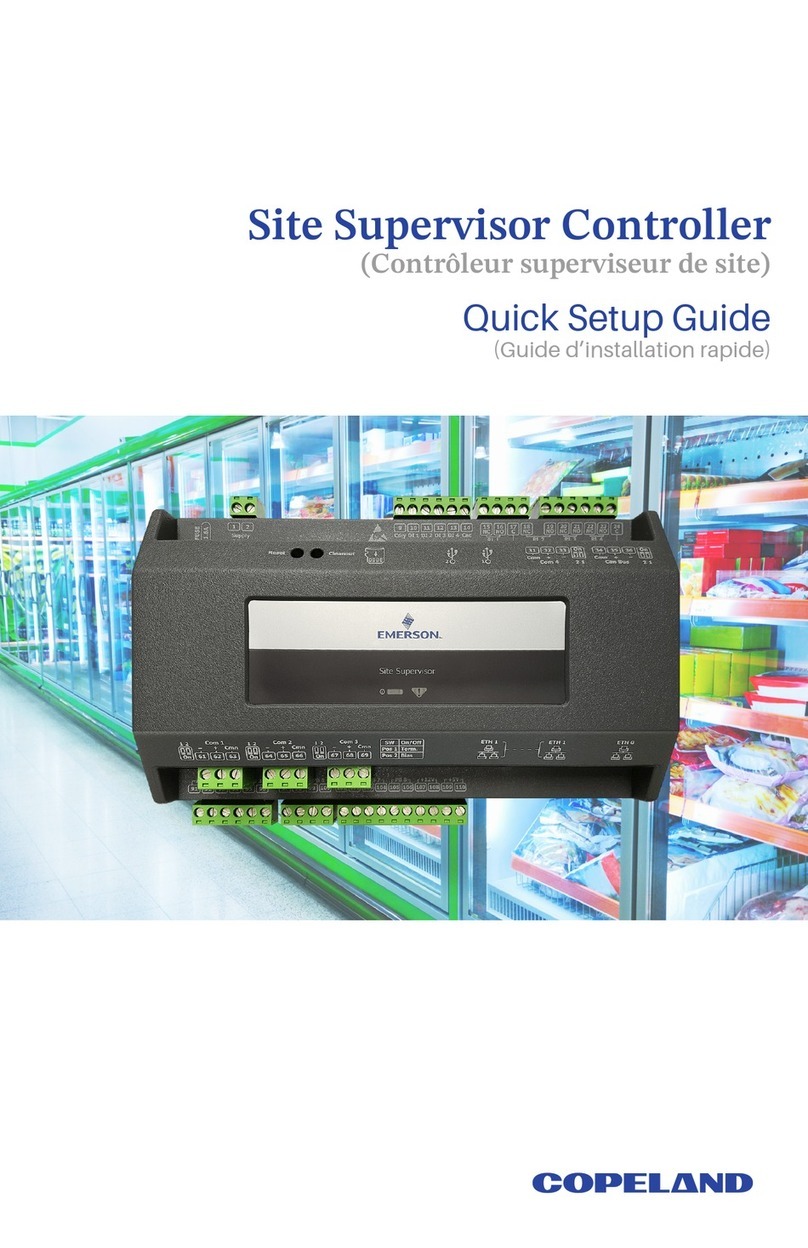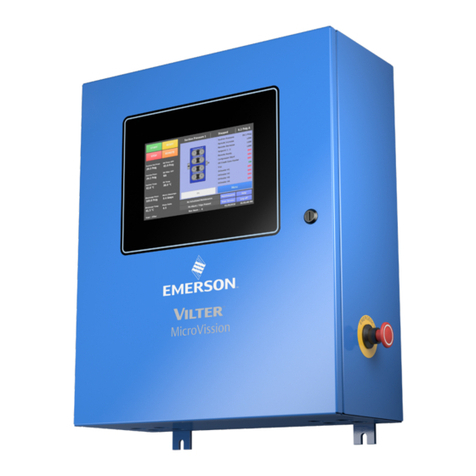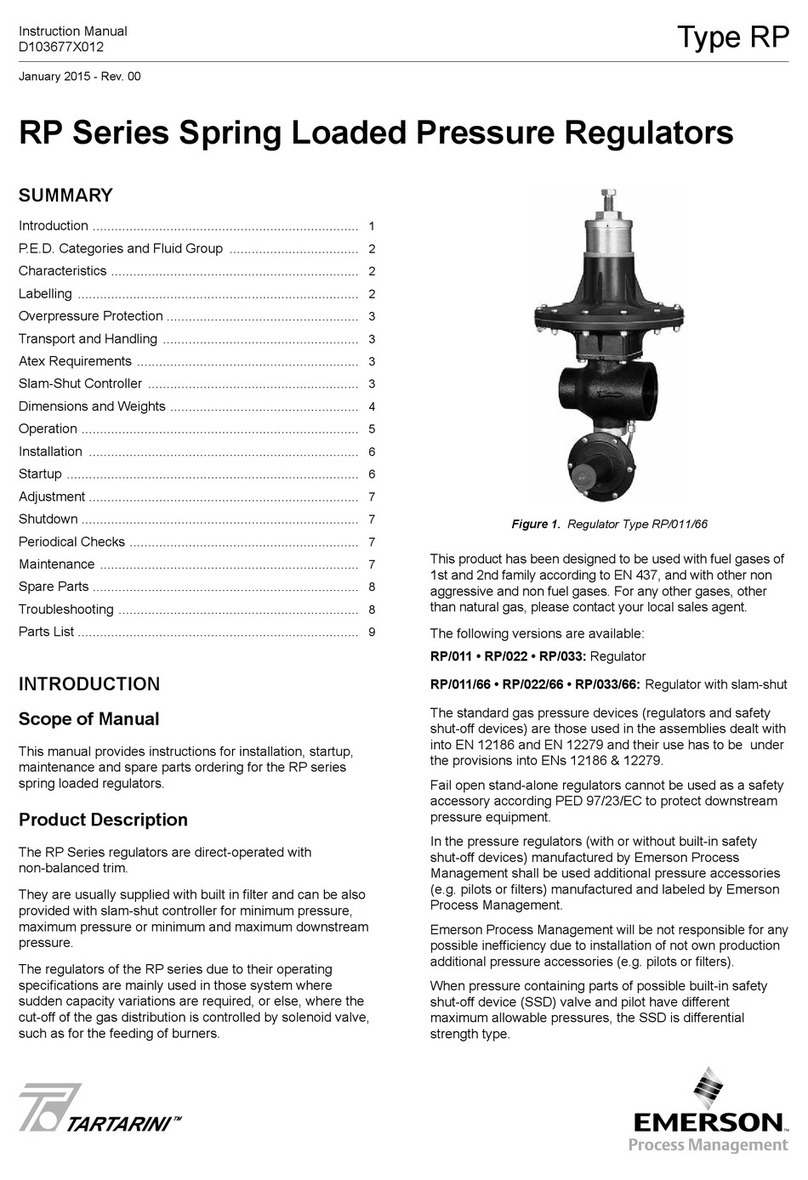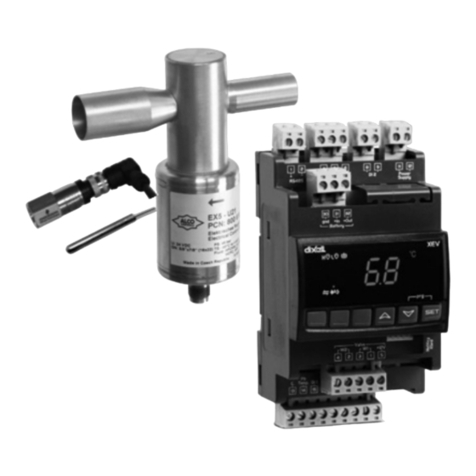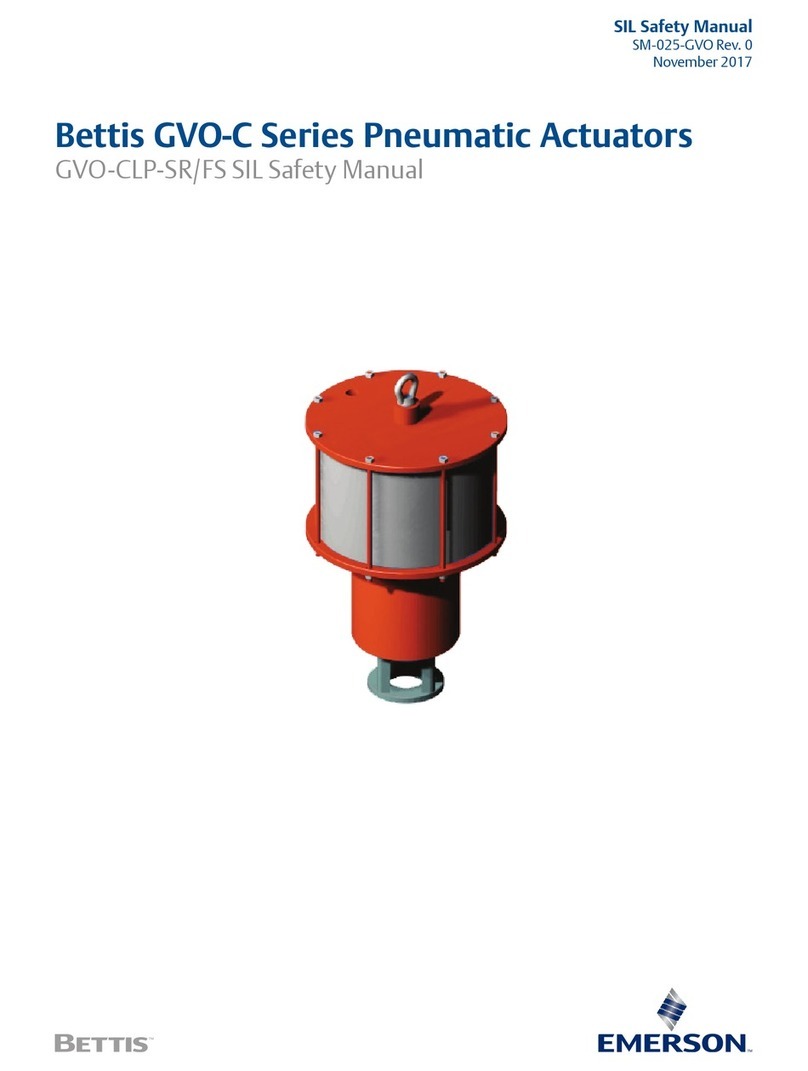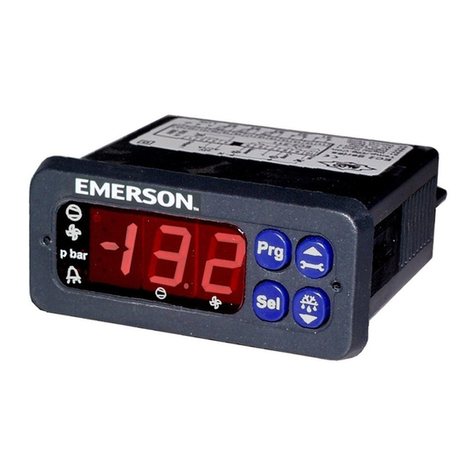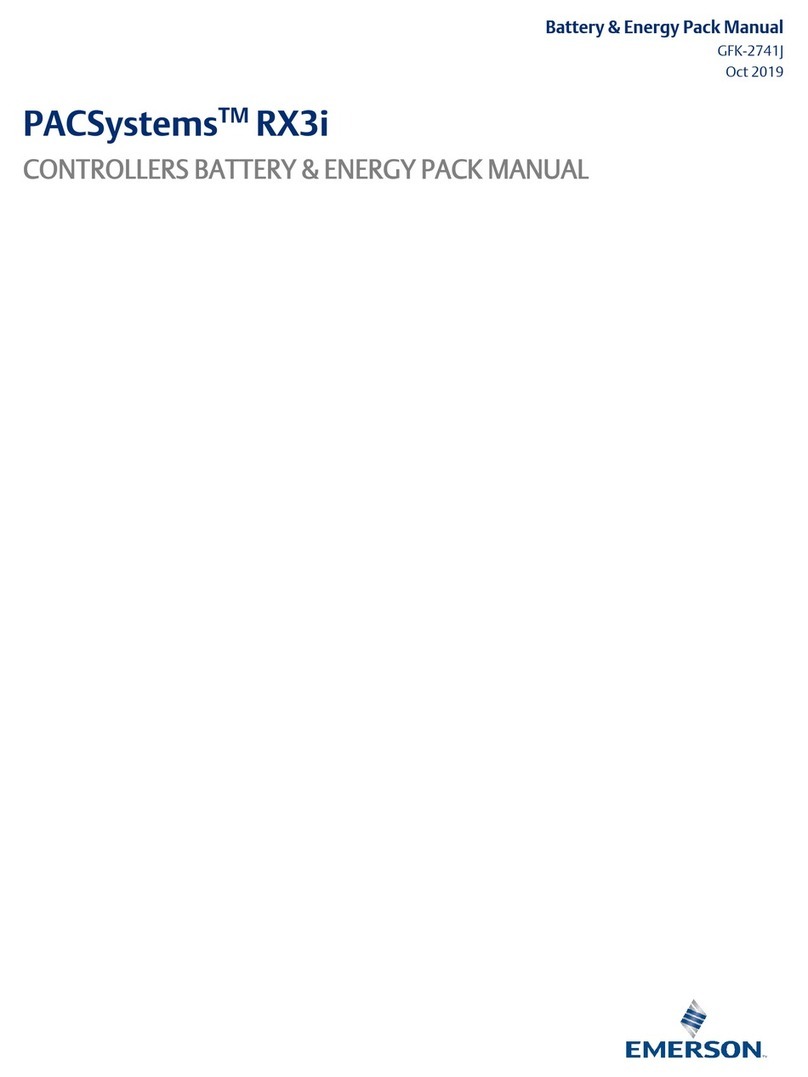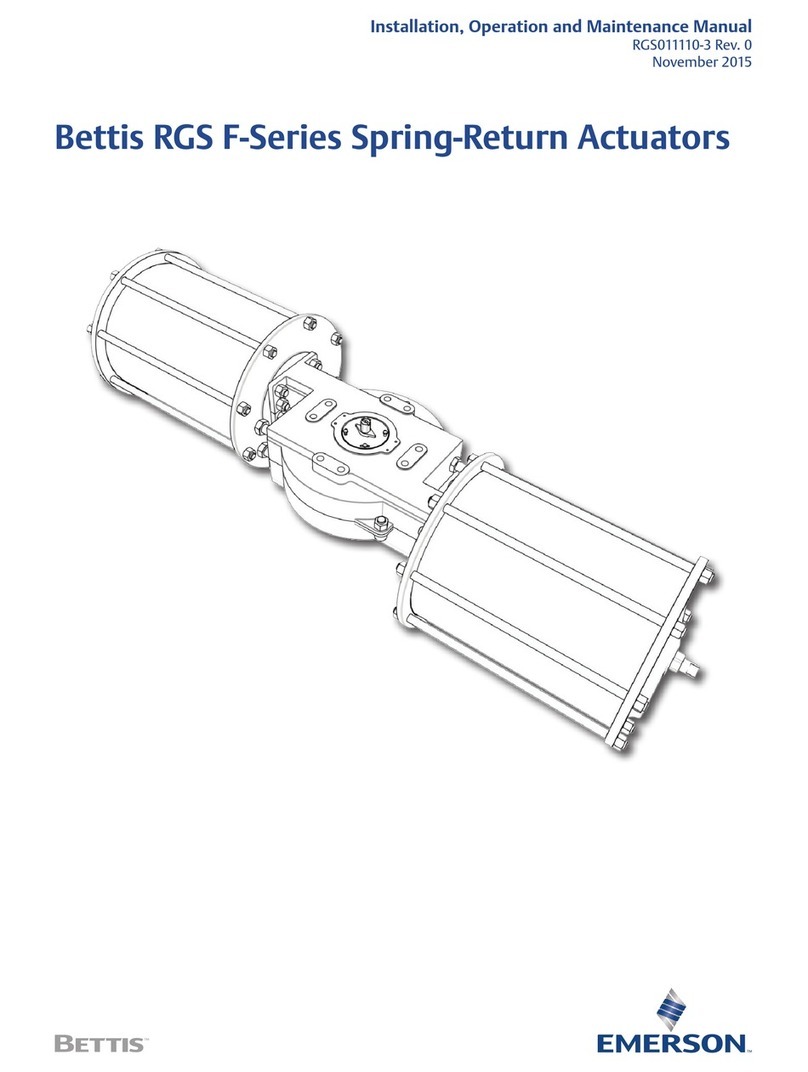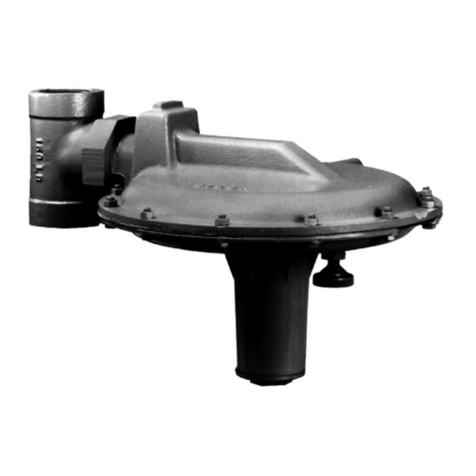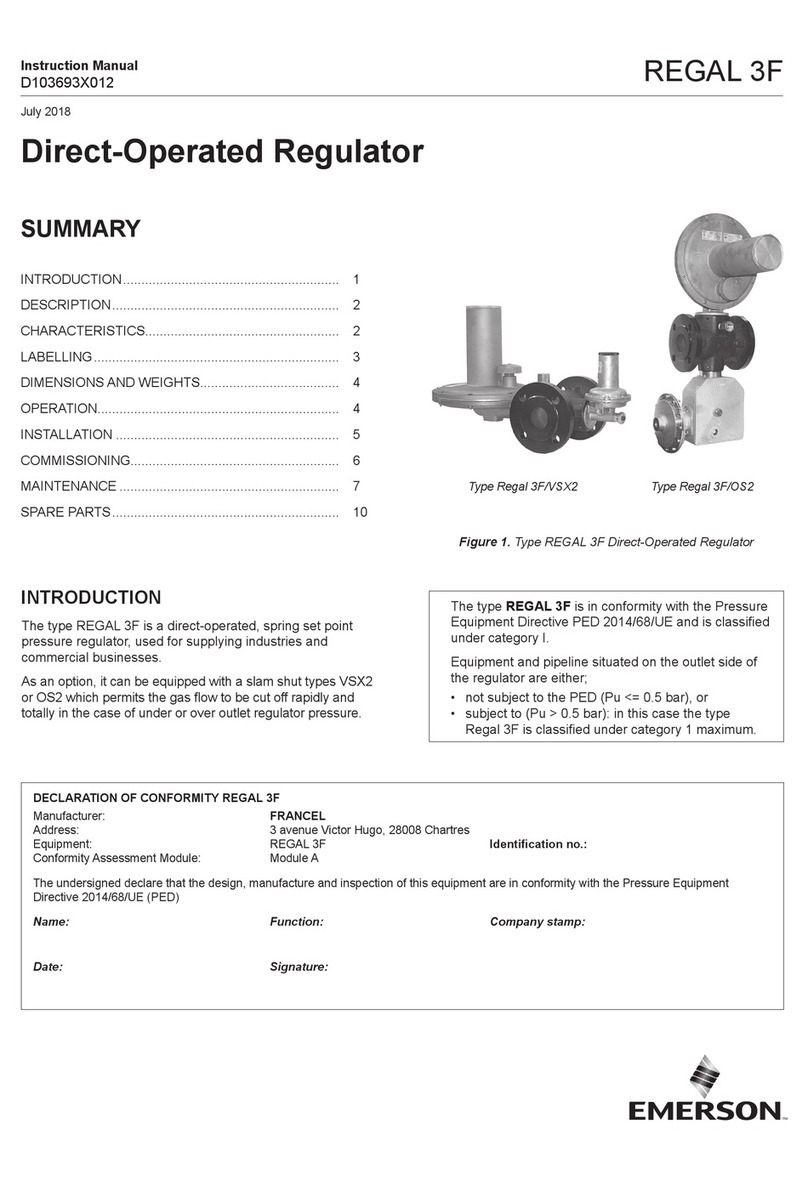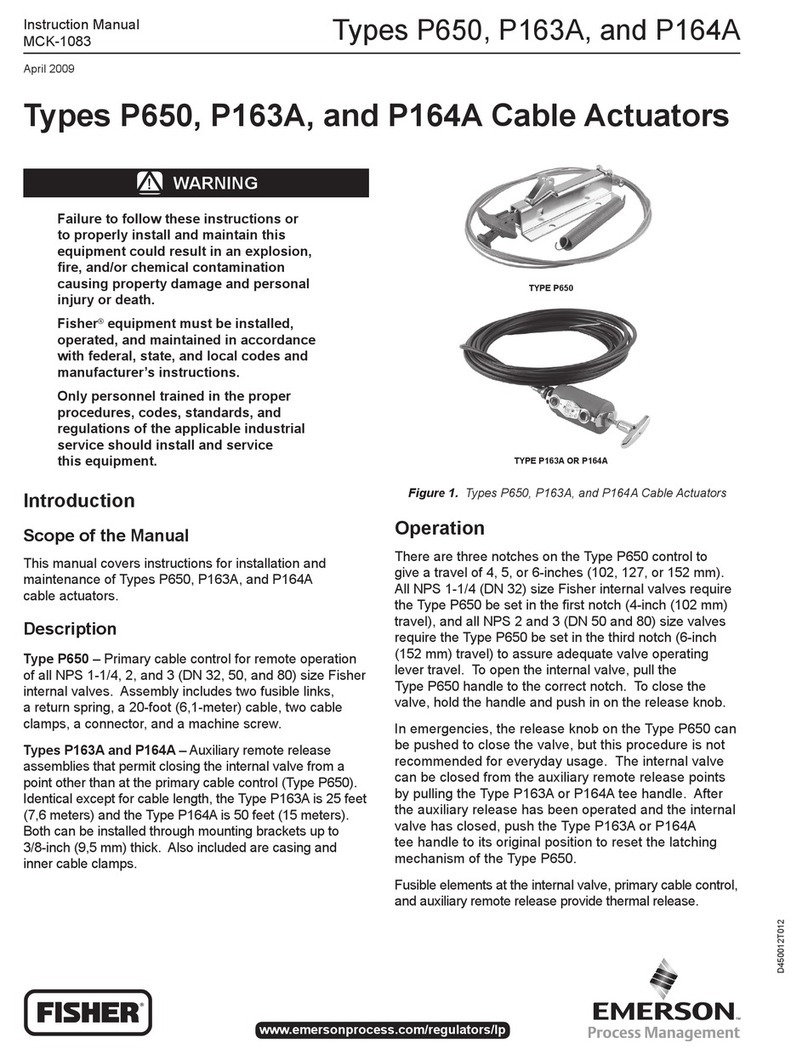
44 ซ.บรมราชชนนี 70 ถ.บรมราชชนนี ศาลาธรรมสพน์ ทวีวัฒนา กทม. 10170.
website: https://www.add-furnace.com/ โทร: 02-888-3472
from collecting moisture, corrosive chemicals, or other foreign
material) orient the vent to the lowest possible point on the
spring case or point it verticallydown, or install the regulator
under a protective cover so that it is protected from the
elements. Inspect the vent hole regularly to make sure it is not
plugged. Spring case vent hole orientation may bechanged
by rotating the spring case with respect to the body. A
SHUTOFF VALVE,
PLUG COCK, ETC.
1/4-inch threaded NPT spring case vent may be remotely
vented by installing obstruction-free tubing or piping into the
vent. Protect the remote vent by installing a screened vent
cap on the remote end of the vent pipe.
7. For use in regulator shutdown, install upstream block and
vent valves and downstream block and vent valves (if
required), or provide some other suitable means of properly
venting the regulator inlet and outlet pressures. Install a
pressure gauge to monitor instruments onstartup.
8. Applya good grade of pipe compound to the male pipe threads
before making connections, making sure not to get the pipe
compound inside the regulator.
9. Install tubing fitting or pipinginto the NPT inlet andoutlet
connections on the body.
10. The second 1/4-inch threaded NPT side outlet can be used
for a gauge or other use. If not used, it must beplugged.
11. On liquid service, it is recommended that shutoff valves
be installed on the inlet side of the regulators. Figure 2
shows a typical installation using the Type 64SR. If other
regulator models are used, an external relief valveis
required downstream of the regulator and before any shutoff
valve. Installations with shutoffs downstream of the regulator
can trap liquid between the regulator and the shutoff. The
trapped liquid can vaporize, opening the internal or external
relief valve. On installations where it is impossible to install
the regulator without using shutoffs between the regulator
and the burner,either install the regulator in a safelocation or
run a vent line from the Type 64SR vent or the discharge
point of the relief valve to a safe location so that any
discharge through the relief valve will not create ahazard.
Overpressure Protection
! WARNING
Personal injury or system damage may result if
these regulators are installed without appropriate
overpressure protection. If maximum inlet
pressure to the 64 and 67C Series exceeds
maximum pressure ratings of the downstream
equipment or exceeds maximum allowable outlet
pressure of the 64 and 67C Series, then additional
overpressure protection is required. Outlet
pressures greater than Maximum Emergency
Outlet Pressure limits may cause damage to
regulator parts, leaks in the regulator, or personal
injury due to bursting of pressure-containing
parts or explosion of accumulatedgas.
If these regulators are exposed to an
overpressure condition, they must be inspected
for damage that may have occurred.
ACCEPTABLE WITH VENT LOCATED OR PIPED TO
SAFE LOCATION
Figure 2. Type 64SR on Liquid Service Requires Care with
Downstream Restrictions
Large volumes of gas may discharge through
the Type 64SR regulator vent during internal
relief valve operation, which can result in fire or
explosion from accumulated gas.
Arelief valveisrequireddownstreamofalltheseregulator
to provide overpressure protection to prevent damage to
downstreamequipmentand systemsorwhen used inliquid
service. The Type 64SR has an internal relief valve that opens
when downstream pressure reaches approximately 125% to
250% of the setpoint. Gas discharge is through the regulator
vent. The Type 64SR gives overpressure protection against
excessivebuildupresultingfrom seat leakagedueto wornparts
or chips of foreign material on the orifice. Additional external
reliefvalvesmayberequiredto preventoverpressuredamageto
downstreamequipmentorsystems.
Startup and Adjustment
1. With proper installation completed and downstream equipment
properly adjusted, slowly open the upstream and downstream
shutoff valve (when used) while using pressure gauges to
monitor pressure.
! WARNING
To avoid personal injury, property damage,
or equipment damage caused by bursting
ofpressure-containingpartsorexplosionof
accumulatedgas,neveradjustthecontrol spring
to produce an outlet pressure higher than the
upper limit of the outlet pressure range for that
particular spring. If the desired outlet pressure
is not within the range of the control spring,
install a spring of the proper range according to
theDiaphragmPartsMaintenanceprocedure.
2. If outlet pressure adjustment is necessary, monitor outlet
pressure with a gauge during the adjustment procedure. The
regulator, except for the Type 67CN which is notfield
3
